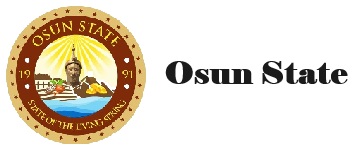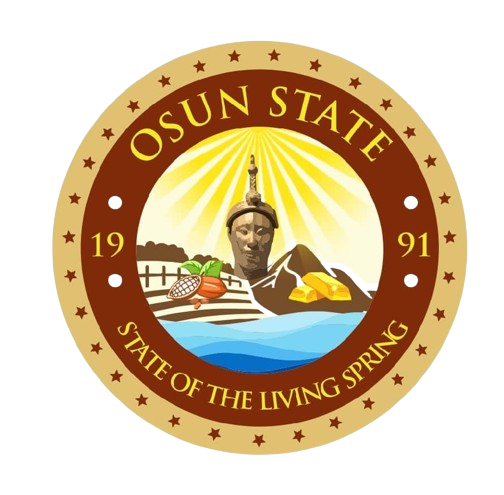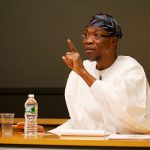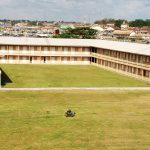INDEPENDENT OPINION: Aregbesola’s Education Reforms Should Be Appreciated

I have always argued that the critical appraisals of government policies and performances should also highlight innovative policies, programmes, and projects capable of producing change for the better. Large-scale reproduction of such policies, programmes, and projects could initiate desired change in specific sectors across the country.
Governor Rauf Aregbesola’s innovative education reform in Osun State is a step in the right direction, despite the controversy surrounding the “reclassification” of schools. A close study of various components of the ongoing reform and a long telephone conversation with the governor indicate that the reclassification is only an aspect of a larger policy aimed at improving educational outcome in the state.
But the policy could hardly be appreciated unless it is properly situated within its historical context. When Aregbesola assumed office in November 2010, Osun lagged behind in the South-West in the percentage of secondary school pupils who had credit passes in five subjects, including English Language and Mathematics. Besides, only about three per cent of secondary school-leavers in the state could go on to matriculate as university students.
Alarmed by this deplorable educational outcome, Aregbesola set up an education summit in February 2011, within three months of his assumption of office. The summit, made up of prominent scholars and educators, and headed by Prof. Wole Soyinka, drew upon best practices around the world in developing a blueprint for restructuring the educational system in the state.
In accordance with the blueprint, Aregbesola designed a policy, which calls for a comprehensive reform of primary and secondary education throughout the state. The overall goal of the policy is to find ways of better delivering the curriculum to all schoolchildren in the most successful and cost-effective manner; of establishing effective supervision and quality control measures; and of reducing costs, without sacrificing quality.
Realising the huge initial capital outlay required to implement such a policy, Aregbesola decided to adopt a gradualist approach. His first line of action was to provide exercise books for all schoolchildren, while textbooks and specially designed Tablets popularly called Opon Imo, were provided for primary and secondary pupils, respectively.
Next, the focus shifted to the prompt payment of running grants to primary and secondary schools throughout the state as well as full payment of the West African Examinations Council’s fees, averaging over N300m per year for all final year pupils in the state’s public secondary schools. To encourage the pupils to stay in school, a 90 per cent attendance rule was imposed. In order to keep the most vulnerable children in school and sustain their attention, the state embarked on providing free meals for pupils in Primary 1 to 4.
While these changes were going on, schools were redesigned in order to accommodate state-of-the classrooms, administrative blocks, library and computer facilities, and ample playgrounds. The new design led to the ongoing construction of 100 primary schools, 50 Middle Schools, and 20 High Schools across the state. Each school complex is designed to house about 1,000 pupils.
It was the physical realignment of schools and the need to group pupils according to age brackets and their needs that led to the reclassification of primary and secondary schools. The reclassification entails two major changes, namely, (a) the regrouping of classes and (b), the merging of schools in some major cities. Primary and secondary school classes are reclassified and renamed as follows: Elementary School (Grades 1-4); Middle School (Grades 5-9); and High School (Grades 10-12). For easy identification during school session, all students across the state are required to wear the same uniform.
True, the reclassification is still accommodated within the nation’s 6-3-3-4 education structure, the introduction of new nomenclature — Middle, High, Grades — is unnecessary as it contributes nothing to quality of instruction or learning. Besides, it masks the substantive and non-controversial components of a truly reformist education policy.
It also accentuates the controversy surrounding the merging of schools. Christians protested against it for blurring religious and gender boundaries in Christian schools. Specifically, they do not want coeducation and the wearing of Hijab in their schools. They also want their schools’ historical identity preserved in recognition of their Christian origins. The illogicality of their position lies in the government’s take-over of these same schools in 1978, some 35 years ago, with their funding, staffing, management, and supervision ceded to the government. Besides, mixed Christian schools already exist throughout the state.
Side by side with the religious protesters are opposition political parties, led by the Peoples Democratic Party, which condemns the reclassification as “an ill wind that blows no good”. It’s all part of the familiar PDP vs APC media fight.
The political, religious, and egocentric motivation for these protests is indicative of a political culture in which the politics of identity and self-interest overrides the politics of public interest and public good. This kind of politics ignores global trends in education, which indicate that no useful purpose is served by the separation of pupils on the basis of social cleavages. Rather, it is argued that more is gained by learners when they are able to draw on a diversity of religious, ethnic, class, and gender perspectives in the classroom.
When Aregbesola’s reforms are placed within a global context, we discover that they are reminiscent of ongoing reforms in major school districts in the United States. Faced with dwindling academic fortunes and a budget shortfall, the Philadelphia School District recently closed 24 schools and merged others in order to achieve cost effectiveness, efficient management and supervision, and improvement in standards.
This trend is not limited to primary and secondary education alone. In the State of Georgia, eight public colleges were merged into four, partly in response to continued state budget cuts but also to expand academic programmes, and improve quality. The editorial of Sunday PUNCH of October 20, 2013, implicitly recalls this trend when it advocated the pruning of Nigerian universities to a manageable number.
I happen to know first-hand that Aregbesola comes from a family of Christians and Muslims like many others in the South-West. Besides, I have not smelled an Islamisation agenda in the various components of his education policy that I have studied. What I see is a policy that will benefit everyone, and it should be allowed to move forward.
NIYI AKINASO VIA PUNCH
Governor Rauf Aregbesola’s innovative education reform in Osun State is a step in the right direction, despite the controversy surrounding the “reclassification” of schools. A close study of various components of the ongoing reform and a long telephone conversation with the governor indicate that the reclassification is only an aspect of a larger policy aimed at improving educational outcome in the state.
But the policy could hardly be appreciated unless it is properly situated within its historical context. When Aregbesola assumed office in November 2010, Osun lagged behind in the South-West in the percentage of secondary school pupils who had credit passes in five subjects, including English Language and Mathematics. Besides, only about three per cent of secondary school-leavers in the state could go on to matriculate as university students.
Alarmed by this deplorable educational outcome, Aregbesola set up an education summit in February 2011, within three months of his assumption of office. The summit, made up of prominent scholars and educators, and headed by Prof. Wole Soyinka, drew upon best practices around the world in developing a blueprint for restructuring the educational system in the state.
In accordance with the blueprint, Aregbesola designed a policy, which calls for a comprehensive reform of primary and secondary education throughout the state. The overall goal of the policy is to find ways of better delivering the curriculum to all schoolchildren in the most successful and cost-effective manner; of establishing effective supervision and quality control measures; and of reducing costs, without sacrificing quality.
Realising the huge initial capital outlay required to implement such a policy, Aregbesola decided to adopt a gradualist approach. His first line of action was to provide exercise books for all schoolchildren, while textbooks and specially designed Tablets popularly called Opon Imo, were provided for primary and secondary pupils, respectively.
Next, the focus shifted to the prompt payment of running grants to primary and secondary schools throughout the state as well as full payment of the West African Examinations Council’s fees, averaging over N300m per year for all final year pupils in the state’s public secondary schools. To encourage the pupils to stay in school, a 90 per cent attendance rule was imposed. In order to keep the most vulnerable children in school and sustain their attention, the state embarked on providing free meals for pupils in Primary 1 to 4.
While these changes were going on, schools were redesigned in order to accommodate state-of-the classrooms, administrative blocks, library and computer facilities, and ample playgrounds. The new design led to the ongoing construction of 100 primary schools, 50 Middle Schools, and 20 High Schools across the state. Each school complex is designed to house about 1,000 pupils.
It was the physical realignment of schools and the need to group pupils according to age brackets and their needs that led to the reclassification of primary and secondary schools. The reclassification entails two major changes, namely, (a) the regrouping of classes and (b), the merging of schools in some major cities. Primary and secondary school classes are reclassified and renamed as follows: Elementary School (Grades 1-4); Middle School (Grades 5-9); and High School (Grades 10-12). For easy identification during school session, all students across the state are required to wear the same uniform.
True, the reclassification is still accommodated within the nation’s 6-3-3-4 education structure, the introduction of new nomenclature — Middle, High, Grades — is unnecessary as it contributes nothing to quality of instruction or learning. Besides, it masks the substantive and non-controversial components of a truly reformist education policy.
It also accentuates the controversy surrounding the merging of schools. Christians protested against it for blurring religious and gender boundaries in Christian schools. Specifically, they do not want coeducation and the wearing of Hijab in their schools. They also want their schools’ historical identity preserved in recognition of their Christian origins. The illogicality of their position lies in the government’s take-over of these same schools in 1978, some 35 years ago, with their funding, staffing, management, and supervision ceded to the government. Besides, mixed Christian schools already exist throughout the state.
Side by side with the religious protesters are opposition political parties, led by the Peoples Democratic Party, which condemns the reclassification as “an ill wind that blows no good”. It’s all part of the familiar PDP vs APC media fight.
The political, religious, and egocentric motivation for these protests is indicative of a political culture in which the politics of identity and self-interest overrides the politics of public interest and public good. This kind of politics ignores global trends in education, which indicate that no useful purpose is served by the separation of pupils on the basis of social cleavages. Rather, it is argued that more is gained by learners when they are able to draw on a diversity of religious, ethnic, class, and gender perspectives in the classroom.
When Aregbesola’s reforms are placed within a global context, we discover that they are reminiscent of ongoing reforms in major school districts in the United States. Faced with dwindling academic fortunes and a budget shortfall, the Philadelphia School District recently closed 24 schools and merged others in order to achieve cost effectiveness, efficient management and supervision, and improvement in standards.
This trend is not limited to primary and secondary education alone. In the State of Georgia, eight public colleges were merged into four, partly in response to continued state budget cuts but also to expand academic programmes, and improve quality. The editorial of Sunday PUNCH of October 20, 2013, implicitly recalls this trend when it advocated the pruning of Nigerian universities to a manageable number.
I happen to know first-hand that Aregbesola comes from a family of Christians and Muslims like many others in the South-West. Besides, I have not smelled an Islamisation agenda in the various components of his education policy that I have studied. What I see is a policy that will benefit everyone, and it should be allowed to move forward.
NIYI AKINASO VIA PUNCH



